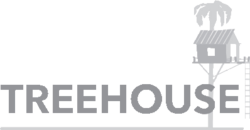| Site Notice |
|---|
|
We have a limited coverage policy. Please check our coverage page to see which articles are allowed. |
Treehouse
| Treehouse | ||||||||||
|---|---|---|---|---|---|---|---|---|---|---|
| ||||||||||
|
Treehouse is Nintendo of America's internal product development division. Based in a secluded, high-security office within Nintendo of America's Redmond headquarters, Treehouse handles product management, quality assurance, and translation and localization for Nintendo's games, and is the audiovisual department that puts together game trailers.[1]
Treehouse was started in the mid-1990's, in response to the generally poor translation work found in many NES and SNES titles.[1] The codename "Treehouse" originates from Donkey Kong Country, referring to Donkey Kong's home; the team working on adapting and testing the game for North America was isolated from the rest of Nintendo to preserve the game's secrecy, and as the team expanded afterward, the name was kept.[1] For games that do not have as much text to translate, Treehouse is typically involved later in development, but when translating larger titles, the team works with the Japanese developers as the game is being worked on.[2] The Japanese developers also speak with Treehouse to determine if particular elements of a game are too specific to Japanese culture, so that Nintendo's games can maintain an "international" feel.[1]
Since E3 2014, employees from Treehouse have occasionally hosted livestreams to showcase upcoming and recently released games.
External links
See also
- Mario Club (Both Treehouse and Mario Club are play-testers of prototypes)
References
- ↑ 1.0 1.1 1.2 1.3 Nintendo's Secret Weapon. Kotaku (April 22, 2014). Retrieved April 20, 2016.
- ↑ The Treehouse Interview. Nintendo World Report (November 30, 2004). Retrieved April 16, 2016.
